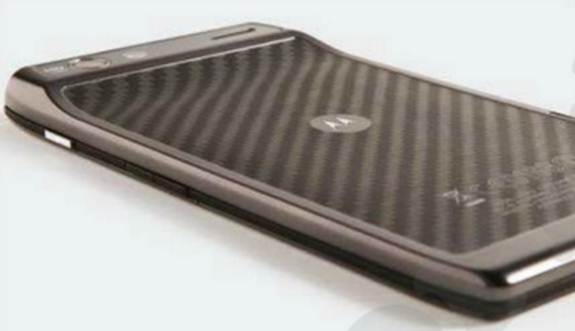A stylish handset with an incredibly slim
waistline
There’s no doubting the Motorola RAZR is a well-designed,
fully featured phone that looks fantastic. And with the release of its slightly
more powerful brethren - the RAZR Maxx - the slimline model has received a
welcome price-cut.

Motorola
RAZR
Like its predecessor (which remains the
best-selling clamshell phone of all time) the RAZR is thin. Very, very thin. In
fact, it’s the thinnest handset on the market - despite there being a wealth of
high-end tech packed into the tight little chassis.
The RAZR measures just 7.1mm in thickness,
although this does stretch to 9mm at the top to incorporate the Micro-USB port,
Micro HDMI port and 3.5mm headphone jack. It’s noticeably thinner than the
Samsung Galaxy S III and the HTC One X and with a weight of only 127g; you may
almost forget you’re carrying it.
Despite the slim chassis, it’s still a big
phone with a 4.3-inch screen and 131 x 69mm dimensions. The back is covered
with a smooth rubberised plastic tile that feels comfortable but conversely
offers little in terms of grip. You can’t remove the back, so replacing the
Li-ion 1780m Ah battery isn’t an option. In order to install your SIM and
microSD into the slot-loading ports on the side of the handset, you have to
battle with a small plastic cover that requires fingernails and infinite
reserves of patience.
It’s good to see a microSD port on a phone
though as they seem to be falling out of favour in light of cloud storage. The
inclusion of the port lets you add up to 32GB of storage space to the internal
16GB. Video especially is well worth taking advantage of - because the RAZR has
a fantastic screen.

The
RAZR is the thinnest handset on the market - yet it’s still a big phone with a
wealth of top-end tech packed in
The 4.3-inch Super AMOLED display is
surrounded by a thick black bezel, which you won’t notice as soon as the phone
is switched on. Colours are deep and rich so watching movies on this phone is a
real treat. You can also turn the brightness up to a very pleasing level.
Unfortunately, this has quite an effect on battery life and the RAZR only
managed 286 minutes of looped high-definition playback.
Ice Cream cometh
The RAZR runs on the Gingerbread OS at the
time of writing, which makes it a touch dated, although there are reports that
the Ice Cream Sandwich update is imminent. The good news is that Motorola has
put its own skin over Android and added a few useful features (like the ability
to drop apps into folders) that make the omission of ICS easier to bear.
The call clarity of the RAZR is excellent.
However, we found the on-screen keyboard quite cramped and tapping out texts
and emails was a concentrated effort. This isn’t as much of a problem in
landscape mode, but it’s still more difficult than it should be.
The 8-megapixel camera will shoot 1080p
video and features geo-tagging and the usual selection of on-board editing
effects. Combine this with the Super AMOLED screen or a HDTV connected via the
Micro HDMI port and the RAZR could replace your traditional point-and-shoot.
The RAZR is a worthy alternative to
established smartphones. The fact it’s probably rocking Ice Cream Sandwich by
the time you read this makes it even more attractive.
What’s it best for
·
Web & text
·
Photography
·
Movies & music
·
Apps
|
Details
|
|
Price:
|
$503
|
|
Key features
|
|
|
OS:
|
Android 2.3 (Gingerbread)
|
|
Processor:
|
Tl OMAP 4430 1.2GHz
|
|
Storage:
|
16GB
|
|
Camera:
|
8MP
|
|
Screen size:
|
4.3-inch
|
|
Screen resolution:
|
960 x 540
|
|
Weight:
|
127g
|
|
Verdict
|
|
|
Value:
|
4/5
|
|
Features:
|
4/5
|
|
Performance:
|
4/5
|
|
Total:
|
4/5
|
|
|
|